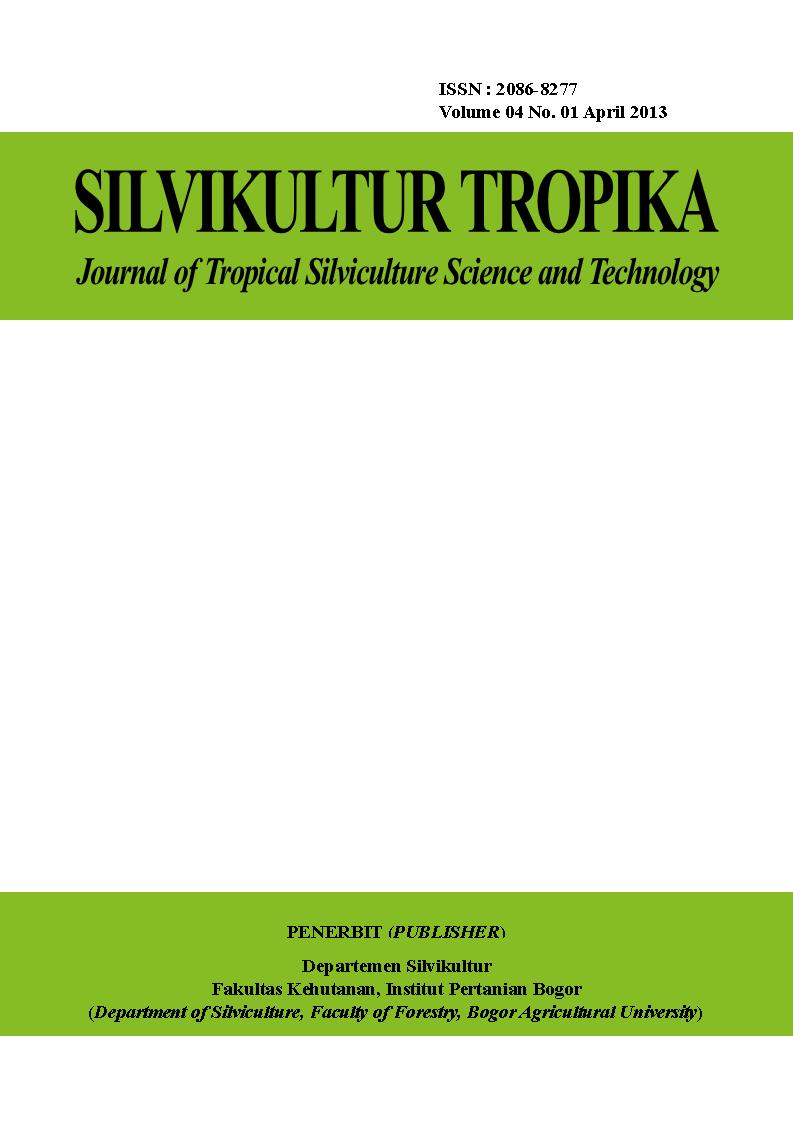The Species Diversity of Ground Cover at Sengon Buto (Enterobilium cyclocarpum Griseb.) and Trembesi (Samanea saman Merr.) Plantation in PT Kitadin’s Post Mining Land, Embalut, Kutai Kartanagara, East Borneo
Abstract
Inappropriate mining activity can rise bad impacts on environment such as decreasing of soil productivity, soil compaction, erotion and sedimentation, soil movements, decreasing of flora and fauna biodiversity, and micro climatechange. Base on Government Regulation (PP) No.18/2008, post-mine area have to reclamated with purpose to recovery and return to previous condition. The objectives of research are to determine species composition and species diversity of ground cover at post-mine revegetation area of PT. Kitadin Embalut, East Kalimantan. The result showed that at the sengon buto (Enterolobium cyclocarpun) plantation was found 22 species in 13 families, while on trembesi (Samanea saman) plantation was found 17 species in 13 families. The species dominant at both plantation were Paspalum conjugatum and Solanum torvum. The species diversity level of ground cover is medium, and species richness level is low, that is richness index at sengon buto plantation 2,56 and trembesi plantation 1,96. Species evennes of ground cover at sengon buto and trembesi plantation are high level because both of them have value E>0,6I. Species composition of ground cover at sengon buto and trembesi plantation are similar with value of IS = 82.05%. The species diversity of ground cover can be affected by shading factor and physical or chemical soil properties. Species dominant of ground
covers on both plantation such as Paspalum conjugatum and Solanum torvum, are have high tolerance level on light and
good adaptation in post-mine area.










